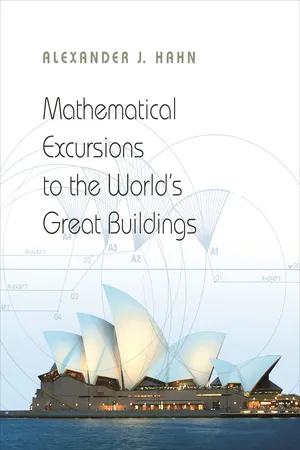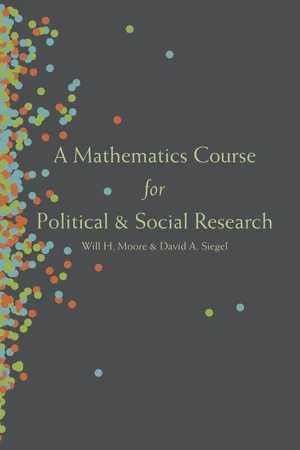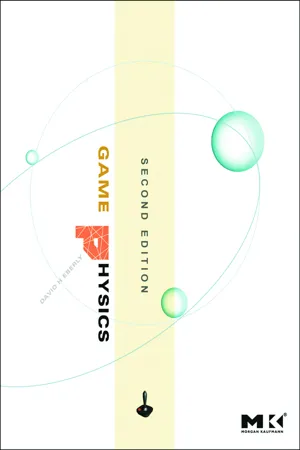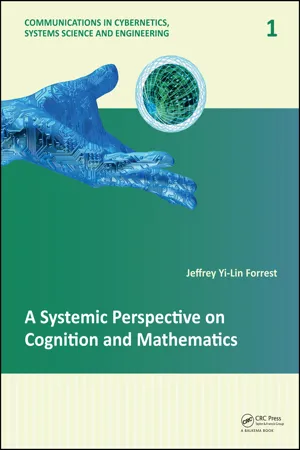Mathematics
Calculus
Calculus is a branch of mathematics that focuses on the study of rates of change and accumulation. It includes two main branches: differential calculus, which deals with the concept of the derivative and its applications, and integral calculus, which focuses on the concept of the integral and its applications. Calculus is widely used in various fields such as physics, engineering, economics, and computer science.
Written by Perlego with AI-assistance
Related key terms
1 of 5
7 Key excerpts on "Calculus"
- Alexander J. Hahn(Author)
- 2012(Publication Date)
- Princeton University Press(Publisher)
The Basics of Calculus The realm of Calculus is divided into two parts. There is differential Calculus , which looks at the slope of a line and is built around the question “how can one think about the slope of a curve?” The essence of integral Calculus is the organized addition of lots of numbers that are very small. Consider the ac-tion of some object within some system. It is often easy to compute the effect Calculus and Structures 267 of a pointlike particle of the object in the system. Integral Calculus asks the question “how can the effects of all the particles be added to tell us what the effect of the entire object is?” Our overview will conclude with a look at the Fundamental Theorem of Calculus . This is a miracle that tells us that dif-ferential and integral Calculus, and in particular the two questions above, are tightly related. The outline of basic Calculus that follows is targeted to the applications that follow. It is intended to be an overview and a review of the subject, but not a text from which Calculus can be learned. As we will soon see, Calculus lives in the same coordinate plane that was studied in “The Coordinate Plane” in Chapter 4. (We will not pursue the three-dimensional version of Calculus or its higher dimensional analogues.) Calculus is organized around the concept of a mathematical function. In fact, expressed briefly, Calculus is the study of mathematical functions . A function is a rule that assigns to real numbers other real numbers in an explicitly specified way. The rule given by ( ) f x x x 2 = + is an algebraic example. The domain of a function is the set of numbers for which the rule is defined (or makes sense). In the example just given, the fact that x x 2 + is defined only for real numbers x with x ( x + 1) $ 0 means that the domain is the set of all real x with x $ 0 or x # -1. The graph of a function f is the set of all points ( a , b ) in the coordinate plane with the property that f ( a ) = b .- Will H. Moore, David A. Siegel(Authors)
- 2013(Publication Date)
- Princeton University Press(Publisher)
5.1 A BRIEF INTRODUCTION TO Calculus For our purposes, the primary use of Calculus is that it allows us to deal with continuity in a consistent and productive manner. This is likely a useless claim at this point, so let us explain. As we discussed in Chapter 4, a continuous function is one that we can draw without lifting pencil from paper. Intuitively, such a function has no gaps or jumps in it. 2 Such functions are great for lots of applications, as we have noted, but they lead to some problems when we’re trying to understand the concept of change. Change within a discrete function is pretty clear: if f (1) = 1 and f (2) = 4, and if f is not defined between 1 and 2, then we know moving from 1 to 2 results in a change of 3 in the function. Further, that’s pretty much all we can say about it. 1 As with the other topics in the book, Calculus has plenty of complexity to it. We’ll just be avoiding nearly all of it. 2 We’re going to assume that unless explicitly stated otherwise functions are defined over subsets of the real numbers and in one dimension in this chapter. 104 CHAPTER 5 What if the function actually is defined between these two points, though? Let f (x) = x 2 , now and consider x ∈ [1, 2]. For this function, f (1) = 1 and f (2) = 4, and we can still say that moving from 1 to 2 results in a change of 3, but we can say a lot more. For example, f (1) = 1 and f (1.5) = 2.25, and moving from 1 to 1.5 results in a change of 1.25, which is less than half the change resulting from moving from 1 to 2. Or, f (1) = 1 and f (1.1) = 1.21, and moving from 1 to 1.1 results in a change of 0.21. In fact, there’s no limit to how many of these changes we can write down. But there is a limit to these changes, in the sense we discussed in Chapter 4: we can keep making the second point closer and closer to 1 until, at the limit, it is the same as 1.- eBook - PDF
- David H. Eberly(Author)
- 2010(Publication Date)
- CRC Press(Publisher)
C h a p t e r 9 Calculus T his appendix provides a brief summary of topics in Calculus that you should be familiar with in order to fully understand how to model a physical system and implement the physical simulation on a computer. Calculus occurs in two flavors, differential Calculus and integral Calculus. Both disciplines are founded on the concepts of infinitesimal quantities and a limit, the measurement of what happens to a quantity as one or more parameters are varied. Calculus involves processing functions, the topic further subdivided based on the number of independent and dependent variables. Univariate Calculus studies func- tions y = f (x ), where x is an independent variable and y is the dependent variable. Formally, the function is written as f : D → R, where D ⊂ IR is the domain of the function and R ⊂ IR is the range of the function. To be somewhat loose with the notation, an emphasis will be placed on the sets containing the domain and range by writing f : IR → IR. The domain and range are most likely proper subsets of IR, but those will be known within the context of the problem at hand. Multivariate Calculus studies functions y = f (x 1 , ... , x n ), where x 1 through x n are n independent variables and y is a single dependent variable. The function may be written as f : IR n → IR, where IR n denotes the set of n-tuples of real numbers. As indi- cated in the last paragraph, the domain of f may be a proper subset of IR n and the range of f may be a proper subset of IR. The next natural extension is to study a collection of functions y i = f i (x 1 , ... , x n ) for 1 ≤ i ≤ m. We now have n independent variables and m dependent variables. Using vector notation, let Y = (y 1 , ... , y m ), X = (x 1 , ... , x n ), and F = ( f 1 , ... , f m ). The function may be written as Y = F(X), or F : IR n → IR m . This coordinate-free represen- tation looks just like the univariate case where n = m = 1. - eBook - PDF
- Doug French(Author)
- 2004(Publication Date)
- Continuum(Publisher)
Chapter 12 The Calculus: Differentiation and Integration There is no part of mathematics for which the methods of approach and development are more important than the Calculus ... the early development must be gradual ... it will be found that pupils who have learnt to apply processes mechanically are mystified by the principles, and are therefore liable to serious error in any matter that is slightly outside the usual routine. (The Teaching of Calculus in Schools, Mathematical Association, 1951) ALGEBRA AND Calculus Since the Calculus is far too big a subject to discuss in a single chapter in a book on algebra, I have chosen to use this final chapter to exemplify the ideas about teaching and learning algebra developed in this book by discussing some selected aspects of the Calculus and its application to problems. Derivatives and integrals are concerned with two very important ideas: the gradient of a curve, with its links to rate of change, and the area under a curve with its links to summation. It is customary to introduce derivatives before integrals, but practice varies with regard to the approach to integration. One approach is to define it as an anti-derivative and then to show that it can be used to determine the area under a curve. The idea of an anti-derivative is obviously relevant when it comes to differential equations, but it does not seem to be the obvious starting point for considering integrals because it lacks an immediate purpose. The other approach is to define integrals directly in terms of the area under a curve and then let it emerge that the process of finding an integral is the reverse of finding a derivative. This second approach has the considerable merit of letting the link between differentiation and integration, the fundamental theorem of the Calculus, emerge as a surprise. - eBook - PDF
Quick Calculus
A Self-Teaching Guide
- Daniel Kleppner, Peter Dourmashkin, Norman Ramsey(Authors)
- 2022(Publication Date)
- Jossey-Bass(Publisher)
CHAPTER TWO Differential Calculus In this chapter you will learn about • The concept of the limit of a function; • What is meant by the derivative of a function; • Interpreting derivatives graphically; • Shortcuts for finding derivatives; • How to recognize derivatives of some common functions; • Finding the maximum or minimum values of functions; • Applying differential Calculus to a variety of problems. 2.1 The Limit of a Function 97 Before diving into differential Calculus, it is essential to understand the concept of the limit of a function. The idea of a limit may be new to you, but it is at the heart of Calculus, and it is essential to understand the material in this section before going on. Once you understand the concept of limits, you should be able to grasp the ideas of differential Calculus quite readily. Limits are so important in Calculus that we will discuss them from two different points of view. First, we will discuss limits from an intuitive point of view. Then, we will give a precise mathematical definition. Go to 98. 57 58 Differential Calculus Chap. 2 98 Here is a little bit of mathematical shorthand, which will be useful in this section. Suppose a variable x has values lying in an interval with the following properties: 1. The interval surrounds some number a. 2. The difference between x and a is less than another number B, where B is any number that you choose. 3. x does not take the particular value a. (We will see later why this point is excluded.) The above three statements can be summarized by the following: |x − a| > 0 (This statement means x cannot have the value a.) |x − a| < B (The magnitude of the difference between x and a is less than the arbitrary number B.) These relations can be combined in the single statement: 0 < |x − a| < B. (If you need to review the symbols used here, see frame 20.) The values of x which satisfy 0 < | x − a | < B are indicated by the interval along the x-axis shown in the figure. - Jeffrey Yi-Lin Forrest(Author)
- 2013(Publication Date)
- CRC Press(Publisher)
Section 10.4 investigates the system of real numbers and various existences without using the concept of limits. Section 10.5 provides a different interpretation for the concept of the traditional limits so that this new approach to Calculus and the tradi-tional approach of Calculus are bridged together. In the final Section 10.6, the concept of Riemann integrals and its connection with that of integral systems are established. This chapter is mainly based on (Zhang, 2010), including all the notations. If interested in learning more of the relevant details, please consult directly with (Zhang, 2010). 10.1 AN OVERVIEW Calculus was officially established in the 17th century. At that time, the development in industry and technology raised many questions for mathematics, some of which were continued inquires of the past while others were challenges of the new age. Investigations of these questions gave birth to Calculus. All these relevant questions can be classified into four types: Type 1: Find the instantaneous speed of a moving object; Type 2: Compute the tangent line at any chosen point on a curve; Type 3: Calculate the maximum and minimum values of a function; and Type 4: Measure the length of a curve, the area of a region, the volume of an enclosed space, and locate the center of mass, etc. The first two types of problems are about understanding regional properties from the overall attributes of the object or matter of concern. The second two types of problems are the opposite: Derive the overall attributes based on regional properties. So, a natural question arises here: What is the most basic and most fundamental relationship between parts and the whole? 10.1.1 Fundamental relationship between parts and whole If a runner finished 110 meter hurdles in 12.88 seconds, then his average speed was 110/12.88 ≈ 8.54 m/s, which stands for an overall attribute of the running during the Calculus without limit 265 entire period of 12.88 seconds.- eBook - PDF
- Paul Zeitz(Author)
- 2016(Publication Date)
- Wiley(Publisher)
9 Calculus In this chapter, we take it for granted that you are familiar with the basic Calculus ideas such as limits, continuity, differentiation, integration, and power series. On the other hand, we assume that you may have heard of, but not mastered: ∙ Formal “ − ” proofs ∙ Taylor series with “remainder” ∙ The mean value theorem In contrast to, say, Chapter 7, this chapter is not a systematic, self-contained treatment. Instead, we concentrate on just a few important ideas that enhance your understanding of how Calculus works. Our goal is twofold: to uncover the practical meaning of some of the things that you have already studied, by developing useful reformulations of old ideas; and to enhance your intuitive understanding of Calculus, by showing you some useful albeit non-rigorous “moving curtains.” The meaning of this last phrase is best understood with an example. 9.1 The Fundamental Theorem of Calculus To understand what a moving curtain is, we shall explore, in some detail, the most important idea of elementary Calculus. This example also introduces a number of ideas that we will keep returning to throughout the chapter. Example 9.1.1 What is the fundamental theorem of Calculus (FTC), what does it mean, and why is it true? Partial Solution: You have undoubtedly learned about the FTC. One formulation of it says that if is a continuous function, 1 then ∫ () = () − (), (9.1.1) where is any antiderivative of ; i.e., ′ () = (). This is a remarkable statement. The left-hand side of equation (9.1.1) can be interpreted as the area bounded by the graph of = (), the -axis, and the vertical lines = and = . The right-hand side has a completely different meaning, since 1 In this chapter, we will assume that the domain and range of all functions are subsets of the real numbers.
Index pages curate the most relevant extracts from our library of academic textbooks. They’ve been created using an in-house natural language model (NLM), each adding context and meaning to key research topics.






